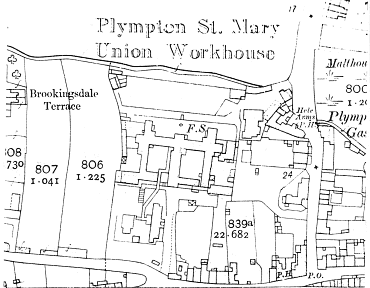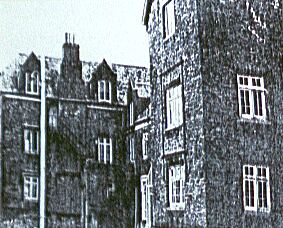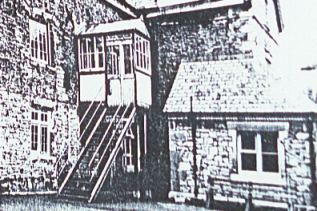Plympton St Mary, Devon
Up to 1834
The parish of St Budeaux established a workhouse in around 1650. A parliamentary report of 1777 recorded parish workhouses in operation at Plympton St Mary (for up to 100 inmates), Brixton (23), Plymstock (30), and Yealmpton (26).
In 1823, Plymstock established a new parish workhouse on the west side of what is now Stentaway Road.
By the 1830s, parish workhouses were operating at Ermington, Holbeton, Newton Ferrers, Plymstock, Ridgeway (a hamlet in the parish of Plympton St Mary), Wembury, and Yealmpton.
After 1834
Plympton St Mary Poor Law Union was formed on 10th October 1836. Its operation was overseen by an elected Board of Guardians, 35 in number, representing its 19 constituent parishes as listed below (figures in brackets indicate numbers of Guardians if more than one):
Devon:
Bickleigh, Brixton (2), Compton Gifford, Cornwood (2), Ermington (3), Egg Buckland (2), Harford, Holbeton (2), Newton Ferrers (2), Plymstock (4), Plympton Earle (2), Plympton St Mary (3), Revelstoke, St Budeaux, Shaugh Prior, Tamerton Foliot (2), Wembury, Weston Peverell or Pennycross, Yealmpton (3).
Later additions: Chelson Meadow (1858-94), Ivybridge (from 1894), Laira Green (1858-96).
The population falling within the union at the 1831 census had been 18,244 with parishes ranging in size from Harford (population 210) to Plymstock (3,088). The average annual poor-rate expenditure for the period 1834-36 had been £8,952 or 9s.10d. per head of the population.
On October 21st 1836, the Board of Guardians agreed to establish a union workhouse in or near Ridgeway where an old parish workhouse was still operating at Elm Terrace — the site of a former lepers' hospital. On January 13th 1837, it was decided to house all the male inmates at the old Plymstock workhouse and the females and children at Ridgeway. On April 20th 1838, the Board decided to erect a new workhouse for 200 inmates. Almost a year later, on Friday March 3rd 1839, a suitable site was identified comprising "Butt Side Park", the property of Lord Morley, and an orchard, the property of Miss Catherine Treeby, at Underwood. The new building, whose final cost was £5,169 2s 4d, admitted its first inmates on Monday 22nd March 22nd 1841. The workhouse location and layout are shown on the map of 1912 below.

Plympton St Mary workhouse site, 1912.
Plympton St Mary, architect unknown, appears not to have followed any of the standard designs employed in most other unions. The workhouse buildings have now all been demolished but some idea of its appearance can be gained from old pictures. It appears to have consisted of two courtyards enclosed by three-storey blocks of a rubble construction.

Plympton St Mary workhouse.

Plympton St Mary workhouse.
A 40-bed infirmary was built on the site in 1908 at a cost of £2,000.
After 1912, the workhouse became known officially as Plympton St Mary Poor Law Institution, then after 1929 as Plympton Public Assistance Institution. After the inauguration of the National Health Service in 1948, it became Underwood House Hospital, renamed Plympton Hospital in 1958. The original workhouse buildings no longer exist. By 2012, the hospital had closed and the site was up for sale.
Cottage Homes
In 1912, the Plympton St Mary Union established childrens cottage homes at 12-13 Beaumont Terrace, Crownhill, Plymouth.
Staff
Inmates
Records
Note: many repositories impose a closure period of up to 100 years for records identifying individuals. Before travelling a long distance, always check that the records you want to consult will be available.
- Plymouth and West Devon Record Office, The Box, Tavistock Place, Plymouth, Devon PL4 8AX. Relatively few records survive.
Bibliography
- None.
Links
- None.
Unless otherwise indicated, this page () is copyright Peter Higginbotham. Contents may not be reproduced without permission.


